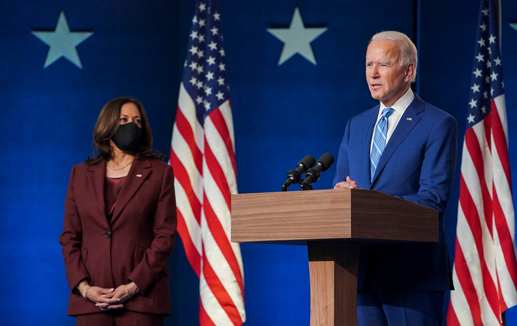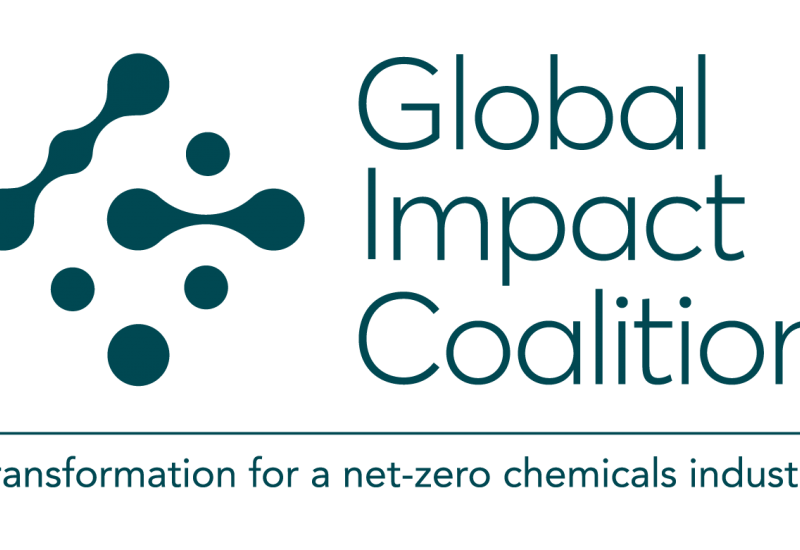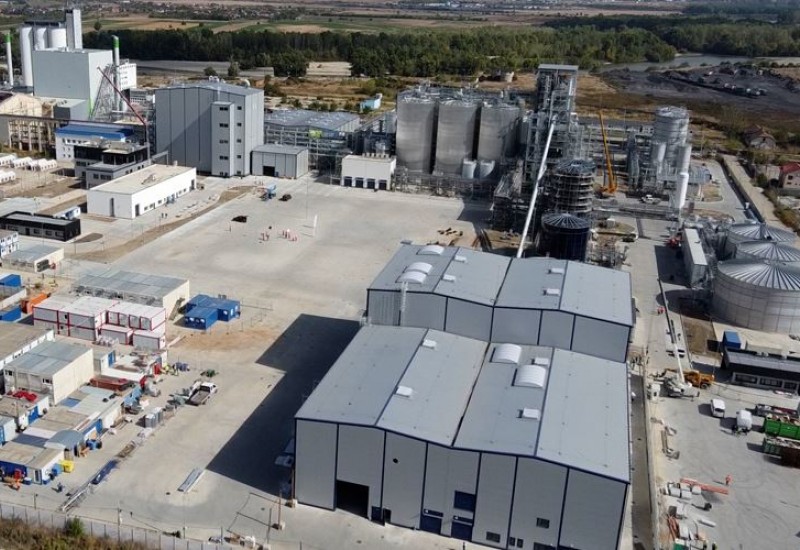Feature article – Biden: What to expect
SOCMA has outlined how it will work with, and the changes it anticipates from, a new administration in the US
With the long drawn-out saga of the 2020 US election finally over and a new administration in place, SOCMA has begun a series of webinars to educate members about what to expect from the Biden administration and its own priorities in engaging with them. The first took place on 25 February.
Having a majority in both Houses of Congress – through Vice President Harris’s casting vote in the Senate – is very significant, said Robert Helminiak, VP of legal and government relations. This makes both the Congressional Review Act (CRA) and the budget reconciliation process available to push legislation through.
At the time, the administration was behind the curve in terms of appointments to the key agencies that SOCMA deals with. This was largely the result of the second impeachment against ex-President Trump. Matters were expected to move quickly thereafter and most of President Biden’s intended appointments were known before his inauguration.
Despite fears that Biden would seek to undo everything that the Trump administration did with the EPA, Helminiak said, the appointment of Michael Regan to head it is “very positive for us”, in terms of building a relationship and improve certain parts of the legislation, like the Toxic Substances Control Act (TSCA). “We’re pretty optimistic about Biden’s entire cabinet,” he said.
Regulation is back
If appointments have been slow, said Jared Rothstein, senior manager of regulatory affairs, Biden has definitely not been slow in terms of issuing executive orders (EOs). “Regulation is back and the era of deregulation is over,” he said. Among others, these orders include:
* ‘Protecting Public Health & the Environment & Restoring Science to Tackle the Climate Crisis’, which instructs agencies to review every rule and guidance document issued by the Trump administration, and evaluate them for rescinding or modification
* ‘Regulatory Freeze Pending Review, putting a stop on the release and implementation of rules from the last days of the Trump administration, which had not yet come into effect, and instructing agencies to initiate reconsideration proceedings
* ‘Revocation of Certain Executive Orders Concerning Federal Regulation’, which, among other things, removed the ‘one-in, two-out’ order that required agencies to remove or counteract two regulations for each new one they passed, as well as other EOs for regulatory streamlining
In addition to EOs, the administration has also published a list of Trump-era rules that it means to review, rescind or modify. Quite a few are relevant to chemicals, Rothstein noted, including:
* Risk Management Programme (RMP) Reconsideration Rule, thus potentially putting accident prevention programmes at chemical facilities under further flux
* TSCA Risk Evaluation Framework Rule, which covers how the EPA evaluates existing chemicals
* Reclassification of Major Sources as Area Sources (MM2A) Rule, which gave industry some flexibility in terms of compliance with the Clean Air Act
* Financial Responsibility Requirements Under CERCLA Section 108(b), which will potentially impose extra insurance costs on the industry
“There’s a whole host of things where, over the last four years, we received favourable outcomes from the prior administration,” Rothstein said. “There will be work to do to preserve those outcomes and convince the agencies that to revise them again creates more regulatory uncertainty, especially for RMP, which has already been through many changes in the last few years.”
The CRA, he continued, empowers Congress to revoke certain rules made since August 2020 by a simple majority vote, until 4 April, without any need for the agencies to re-evaluate them. SOCMA expects the Democrats to target some of the ‘bigger picture’ rules from the Trump era, such as the NEPA, permitting rules, science transparency and cost-benefit rules. However, it remains to be seen what exactly will happen.
Trade issues
There are several key areas where the administration, Congress and SOCMA have the same policy priorities and can work closely together as it did with the Trump administration, Helminiak said. These include COVID-19, where a $1.9 trillion relief package has since been voted through; economic relief; and trade. The latter is a particular focus for SOCMA, because many US speciality chemicals firms are strongly reliant on China for raw materials. Indeed, for many, there are no alternatives to China.
SOCMA is now proposing reopening the Section 301 exclusion process. Many members have asked for these in the past year and most were declined. The association will also push to extend existing exclusions – most in chemicals expired at the end of 2020 in any case – and for greater transparency in the process.
“This is one of the areas where we absolutely need transparency,” Helminiak said. “We have no idea what the criteria are for being granted an exclusion, the process is very vague and there is virtually no explanation of what you need to include in your request or why you were declined … These are big asks, but we believe the Biden administration will be very supportive of them.”
Another priority is the Miscellaneous Tariff Bill (MTB), which gave tariff relief for products not manufactured or found in sufficient quantities in the US. It expired at the end of 2020, causing over 1,600 products to face immediate tariff increases and leaving over 2,500 product petitions unable to receive anticipated duty reductions.
“We are now working through broad coalitions to get a new MTB passed. Draft legislation is floating out there that is very positive. This is another step in getting the economy moving again,” Helminiak said.
SOCMA also wants this made retroactive to 1 January, so that any imports before a new MTB is enacted are free of tariffs. Despite broad support in Congress, this will not necessarily be easy – the MTB previously expired in 2013 and was not renewed until 2017, so work will be needed to ensure it happens.
Finally, there is the Generalised System of Preferences (GSP) programme, which provides non-reciprocal duty-free treatment to certain imports from qualifying developing countries. It saved US companies $1 billion in import duties in 2019. The GSP also expired on 31 December 2020.
This impacted many SOCMA members who import essential materials. The association will also work to get GSP renewed and made retroactive. It is possible that GSP and MTB will pass through in the same bundle of legislation, Helminiak said.
Challenges ahead
SOCMA expects more challenges in the areas of environment and climate; infrastructure; and, labour and employment. This has already been seen with OSHA, being “surprisingly active” already in terms of new orders and standards for COVID-19 prevention at the workplace, according to Rothstein.
OSHA has also released a proposed rule has been released to update OSHA HazComStandard to align with Revision 7 of the GHS. This includes provisions for small containers, bulk shipments, relabelling of products after distribution, disclosure of product chemical names and concentrations, among other things.
TSCA implementation continues to “chug along”, Rothstein said, with a number of deadlines ahead. “The gears are in motion. We did get a fees rule at the end of 2020 and it has been a bit of a mixed bag.”
Having petitioned the EPA for changes on this rule for some time, SOCMA succeeded in keeping new chemical fees flat. “We were able to make a convincing case that the fees were already too high and that they were deterring innovation and the ability to commercialise a new product,” he said.
The EPA is now proposing to increase the fee for individual risk evaluations (REs) for a single chemical from $1.3 million to $2.56 million. Meanwhile, SOCMA has pushed hard for exemptions, to make things easier for companies with minimal activity involving these substances and was broadly successful.
The EPA is now proposing RE exemptions for by-products, impurities, volumes below 2,500 lbs (1,134 kg), chemicals for R&D and non-isolated intermediates. “These exemptions as proposed will spare our industry a lot of potential pain from having to share in these extremely costly REs,” said Rothstein. In addition, the agency is proposing fee sharing to be based on volume calculation rather than an equal split between the companies involved, as before. SOCMA is still working on its response.
The EPA intended to issue a procedural rule on the perennially thorny question of new chemicals at the end of 2020, aiming to make the review process more predictable, transparent and efficient. The rule’s status is unclear, due to the new EOs. It may be modified to require more upfront information from submitters and could potentially be problematic for them, Rothstein warned.
The EPA is still moving along on existing chemicals. Twenty High Priority Chemicals are currently undergoing RE and nine new test orders were issued in January, requiring companies to conduct additional testing to plug information gaps on exposure.
The first ten chemical REs were finalised in the last months of the Trump administration. However, the EPA has signalled that it may re-evaluate the risk findings. Methylene chloride (MC), in Rothstein’s view, is “a likely target”.
A supplemental RE is already going on for asbestos and NGOs are putting pressure on for more on other chemicals where it thinks the initial REs were not done well. Risk management measures are also in process for MC, TCE, 1,4-dioxane, 1-BP, NMP, PV29, HBCD and others. Rules are expected to come out this summer.
Outlook
Looking ahead, said Rothstein, we should watch for further regulatory agendas as the agencies sort out their priorities for the coming year. “The spring one will be really interesting, because it will be the first indication from the agencies as to what they are looking at targeting from a rules perspective.” The outlook should become clearer in April and May, if Biden’s appointees receive their Senate clearance.















